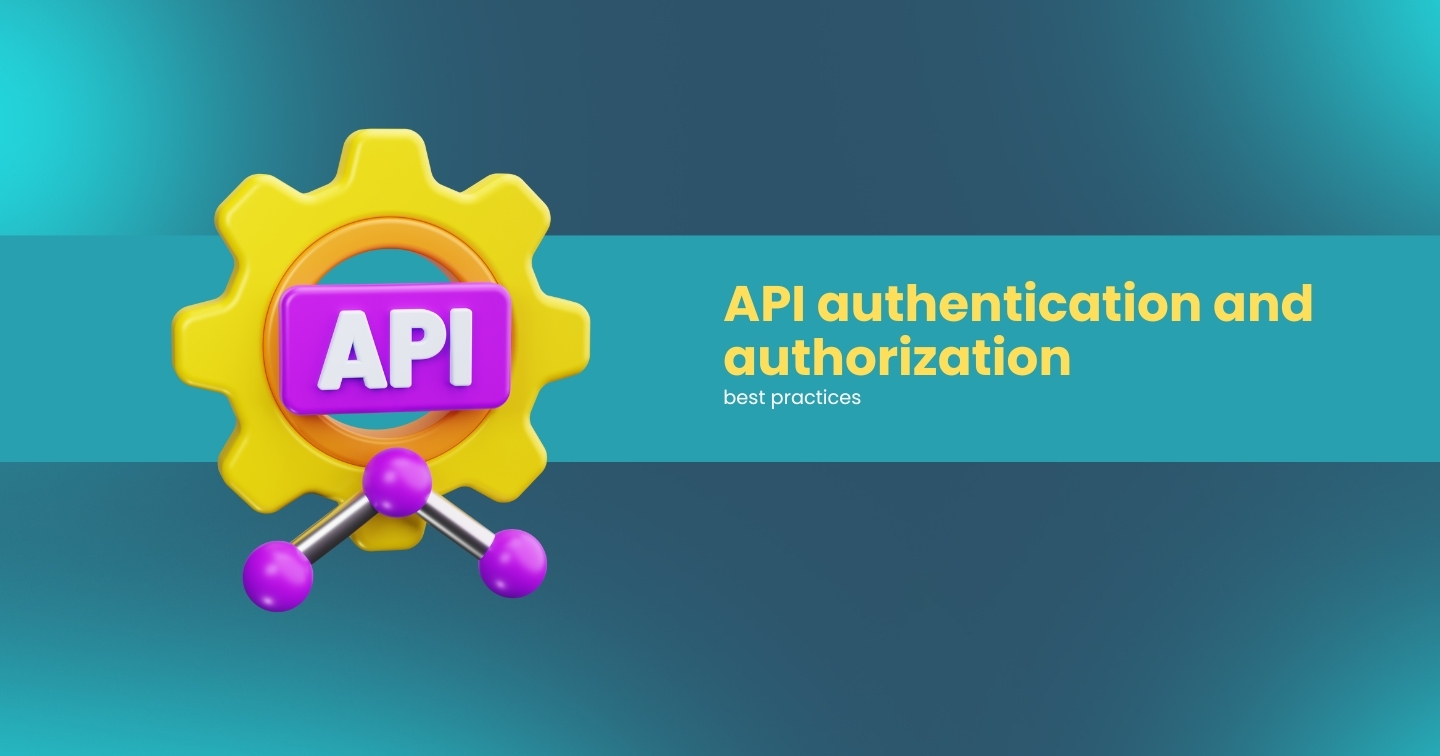API Authentication and Authorization Best Practices
API breaches are a growing concern in the digital world. The cost of an API breach averages $4.45 million per incident, making it one of the most expensive types of data compromises. Shockingly, 83% of API security incidents are caused by authentication failures. These failures expose sensitive user data and critical business systems to cybercriminals.
As APIs become more deeply integrated into business processes, robust authentication and authorization mechanisms are no longer optional; they are essential.
What is API Authentication and Authorization?
API Authentication is the process of confirming the identity of the user, service, or system trying to access the API. This process typically involves verifying credentials like usernames, passwords, or tokens. For example, OAuth 2.0 can be used to authenticate users and allow access to a service, making sure only authorized users are granted access.
API Authorization, on the other hand, comes into play after authentication. It determines what the authenticated user can do, what resources they can access, and what actions they can perform. For instance, a user might be authenticated to access their profile data but might not be authorized to change system settings or view sensitive business data.
Both authentication and authorization are key to protecting APIs and ensuring that only authorized users can access specific data or perform actions. Without proper authentication, unauthorized users can gain access to critical systems, leading to data theft, service disruption, and more.
Strong api cyber security starts with hardened authentication and authorization patterns that minimize token theft and privilege escalation.
Why API Authentication Fails in Most Organizations
Despite the importance of strong authentication systems, many organizations face challenges in securing their APIs. Here’s why authentication failures are common in enterprise environments:
- Resource Constraints vs Security Requirements: As organizations scale, developers often face pressure to speed up development and deliver features quickly. This sometimes leads to compromising security in favor of convenience, resulting in weak authentication mechanisms or overlooked vulnerabilities.
- Legacy System Integration Challenges: Legacy systems often don’t integrate well with modern authentication protocols like OAuth 2.0. This can lead to misconfigurations or gaps in security, leaving APIs vulnerable to breaches.
- Scaling Authentication Across Microservices: Microservices architectures add complexity to authentication management. With hundreds or thousands of services, implementing a centralized authentication system can lead to session management issues, token handling failures, and inadequate access control.
These issues create openings for attackers, making broken authentication one of the most common attack vectors.
OAuth 2.0 vs JWT vs API Keys: Which Authentication Method Works Best?
When it comes to securing APIs, different authentication methods work better in different scenarios. Below, we compare three commonly used methods: OAuth 2.0, JWT, and API Keys.
| Method | Best For | Key Features | Advantages | Limitations |
| OAuth 2.0 | Third-party applications and user-facing apps | Token-based authentication, delegated access | Scalable, widely adopted, enables single sign-on (SSO) | Complex implementation, requires secure token management |
| JWT (JSON Web Tokens) | Web and mobile apps, microservices | Self-contained tokens, stateless authentication | Fast, scalable, secure, ideal for microservices | Token size can be large, requires secure storage |
| API Keys | Internal services, simple use cases | Simple token-based access | Lightweight, easy to deploy, good for service-to-service communication | Insecure if not rotated regularly, lacks fine-grained access control |
For user-facing applications, OAuth 2.0 is preferred, especially when dealing with third-party integrations. JWT works best for microservices architectures, providing scalability and performance. API Keys are often used for internal communication but are less secure for complex, user-driven APIs.
How to Implement Multi-Factor Authentication for APIs
Multi-Factor Authentication (MFA) adds a second layer of security to your API authentication. Even if attackers manage to steal user credentials, they won’t be able to access the system without the second factor, such as an OTP or a biometric scan.
Here’s how to implement MFA for APIs:
- Choose an MFA Method: Implement SMS-based OTPs, authenticator apps (e.g., Google Authenticator), or biometric scans for user verification.
- Integrate MFA in API Endpoints: Apply MFA on critical API endpoints that involve sensitive data or financial transactions.
- Balance Security with User Experience: Ensure that MFA doesn't overly complicate the user experience. The process should be quick and seamless.
MFA significantly strengthens API authentication by ensuring that access is only granted when two factors, something the user knows (password) and something the user has (OTP)—are provided.
API Authorization Models That Scale with Enterprise Growth
As organizations grow, their API authorization models must evolve to handle increased complexity. Below are common authorization models that scale well in enterprise environments:
1. Role-Based Access Control (RBAC)
- Roles are assigned to users based on their job function. For example, a developer might have access to APIs for testing, while an administrator might have access to all APIs.
- Limitation: Can become rigid as systems grow and more complex access is required.
2. Attribute-Based Access Control (ABAC)
- Uses attributes (e.g., user location, time of access, or device) to grant access dynamically.
- Limitation: Complex to configure but offers flexibility as the organization scales.
3. Zero Trust Architecture
- Assumes that every request, internal or external, must be validated and authenticated before being granted access.
- Limitation: Requires significant resources to implement but provides the highest level of security.
Each of these models has its place depending on the size of the organization and the sensitivity of the data.
Common API Authentication Vulnerabilities That Lead to Breaches
Here are some common vulnerabilities in API authentication that can lead to data breaches:
- Weak Password Policies: Allowing weak or predictable passwords exposes APIs to brute-force attacks.
- Token Mismanagement: Poor handling of JWT tokens or OAuth tokens can lead to token theft or session hijacking.
- Broken Object Level Authorization (BOLA): Users can access data they should not have permission to see by manipulating API requests.
- Exposed Authentication Endpoints: APIs that don’t use HTTPS or lack encryption expose sensitive data to attackers.
To mitigate these risks, APIs must implement strong authentication practices, perform regular security testing, and leverage tools like APIsec.ai to automatically scan for vulnerabilities.
Testing Your API Authentication Implementation for Real-World Threats
Testing API authentication should be an ongoing process. Both manual testing and automated testing are necessary:
- Manual Testing: Testers can attempt to bypass authentication using common attack vectors like brute-force password guessing, session hijacking, and token tampering.
- Automated Testing: Tools like APIsec.ai use AI-powered simulations to continuously scan APIs for authentication vulnerabilities in real-time. These tools are essential for detecting flaws that manual testing might miss.
Automating testing ensures that every new release is validated for authentication vulnerabilities before deployment, reducing the risk of exploiting broken authentication.
Compliance Requirements for API Authentication in Regulated Industries
For industries like healthcare, finance, and retail, API authentication must comply with stringent regulations such as:
- PCI DSS: Requires secure authentication for payment transactions.
- HIPAA: Mandates strict controls over access to health-related information.
- SOX: Requires data access control for financial records.
APIsec.ai can help automate security testing and ensure that authentication mechanisms comply with these regulations, providing audit-ready reports and keeping your organization in line with industry standards.
Conclusion
API authentication is a fundamental aspect of securing your applications. By choosing the right authentication method, whether OAuth 2.0, JWT, or API keys—and implementing best practices like multi-factor authentication, organizations can significantly reduce the risk of unauthorized access and data breaches.
For continuous validation, automated tools like APIsec.ai can detect flaws in real-time, ensuring your API authentication is always secure.
Start testing with APIsec.ai today and identify authentication vulnerabilities before attackers can exploit them!
FAQs
Q: What's the difference between API authentication and authorization?
Authentication verifies who the user is, while authorization determines what the authenticated user can access. Without proper authentication, unauthorized users could gain access to sensitive resources.
Q: Is OAuth 2.0 always the best choice for API authentication?
OAuth 2.0 is ideal for user-facing apps and third-party integrations, but for internal services, simpler methods like API keys or JWT may be more efficient.
Q: How often should API authentication tokens be rotated?
It’s recommended to rotate access tokens every 15-60 minutes and refresh tokens periodically, depending on the application’s security requirements.
Q: Can API authentication be automated in CI/CD pipelines?
Yes, using automated testing tools like APIsec.ai integrated into your CI/CD pipeline, you can ensure that API authentication is continuously validated before every release.
Q: What authentication method works best for microservices architectures?
JWT tokens with service mesh integration are ideal for microservices due to their stateless nature, scalability, and support for fine-grained access control.
Q: How do I test if my API authentication is actually secure?
Automated security testing, including penetration testing and continuous monitoring, is necessary to validate the effectiveness of your API authentication mechanisms.
.webp)
.webp)


